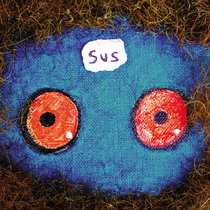
The individual scenes may barely connect but not a single one is forgettable.
#Wild at heart collectors edition review movie
Wild at Heart is a road movie tracking the couple’s flight from Carolina en route to the West Coast and all of the shit that goes wrong around them along the way. Lynch saw Sailor and Lula as two pure souls, and viewed Gifford’s novel as a love story set in hell. She’s out to break up the young couple, even if that means sending after them a private detective (Harry Dean Stanton) and several hitmen. This is no good for her mother, Marietta (Dern’s real-life mother, Diane Ladd, in an Oscar-nominated performance), who believes Sailor witnessed the murder of her husband, in which she had a hand. What’s important is that Sailor and Lula are madly in love. Sailor Ripley wears a snakeskin jacket that’s an often-stated symbol of his individuality and belief in personal freedom years ago he chauffeured for a dangerous gangster. Lula Fortune is the rebellious, 20-year-old daughter of a family with some sort of mob ties. Wild at Heart is only very loosely plot-driven, even taking into consideration the filmmaker whose work we’re discussing. That says a lot about a film which features two musical numbers, a voodoo-practitioner hitwoman, and a surprise fairy godmother who descends from the heavens to bless the movie with an unexpected happy ending. For a director so famous for his surreal flourishes, it’s this moment of stark realism that may be the movie’s most surreal-feeling. (See: a dog wandering off with a severed hand in its mouth after Wild at Heart’s botched robbery Willem Dafoe’s sick punchline at the end of the film’s infamous rape scene.) But there’s nothing funny about Fenn’s rambling death alongside a dark Texas road, consumed by trivialities and tragically unaware of what’s happening to her.

Normally, the filmmaker would approach such darkness with a wink or a smile. It’s a sort of scene that stands out as a rare in Lynch’s oeuvre. Instead it’s all far, far downhill from there. The last time we see those two before this scene, they’re making out alongside the road against a Texas sunset – this would have been any other movie’s happy ending. Rather, it marks a clear line of delineation between the positive, love-conquers-all tone of the movie’s onset and the circling descent into hell that it becomes in its final act.


This scene – much like the child killed by a speeding truck in one of the most unshakeable sequences of last year’s Twin Peaks: The Return – has little bearing on the movie’s plot indeed, it was one written in by Lynch and not part of the original Barry Gifford novel which inspired the film. Lula breaks down, and tearfully wonders out loud why the girl had to go and die in front of them. She stumbles head-first, coughs up a fearful volume of syrupy blood, and dies. The girl is given no name, and her only lines are trivial, confused rants she begs Sailor and Lula not to tell her mother what happened, and to help her find her purse and hairbrush as they try in vain to escort her into their vehicle. They pull over to investigate, finding two passengers deceased – and another, played by Twin Peaks’ Sherilyn Fenn, stumbling through the darkness, bleeding from the head and obviously dying. There’s a scene in Wild at Heart where its two central, star-crossed lovebirds – Nic Cage’s Elvis-obsessed Sailor Ripley and Laura Dern’s free-spirited Lula Fortune – come across a grisly car accident.


 0 kommentar(er)
0 kommentar(er)
